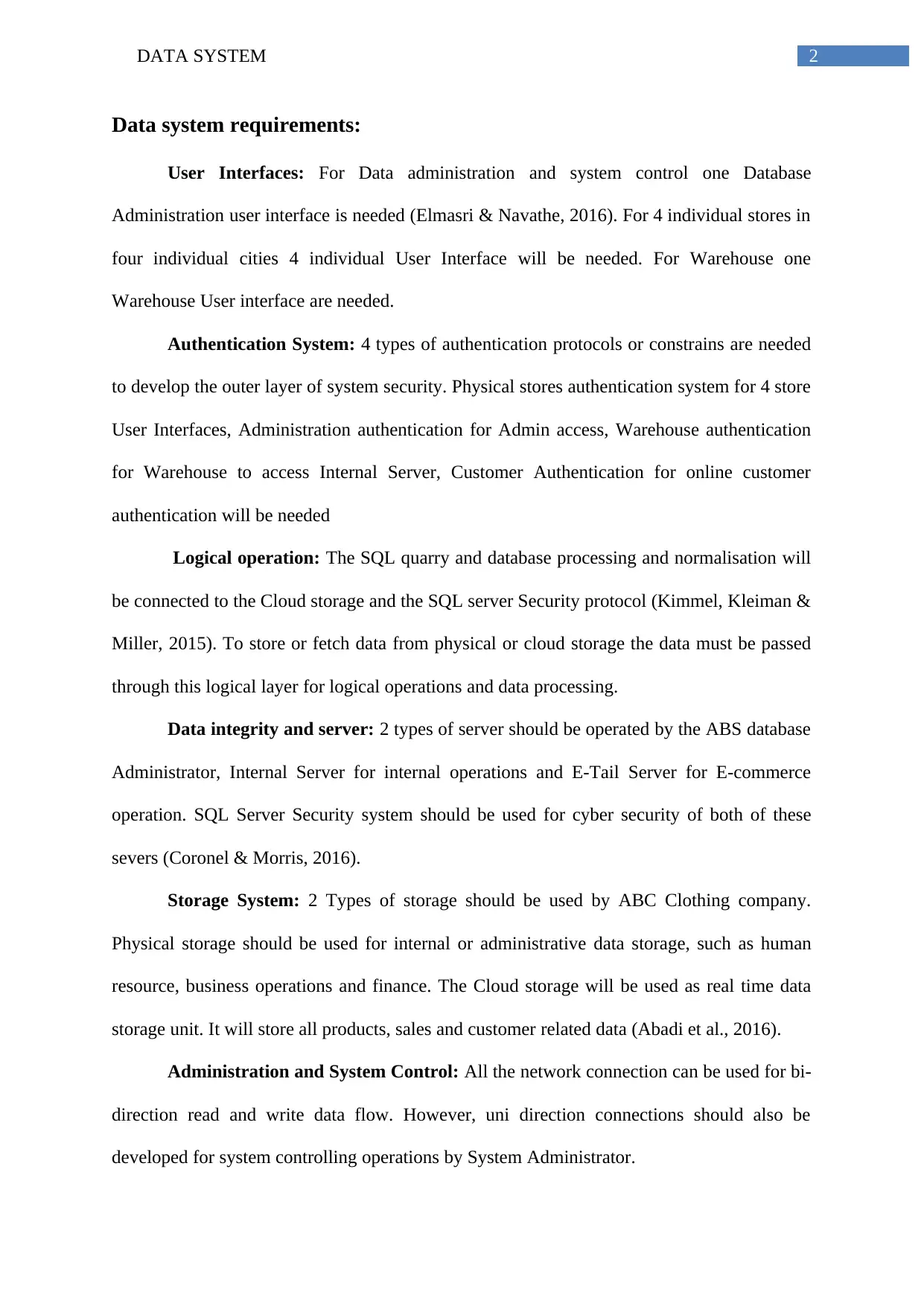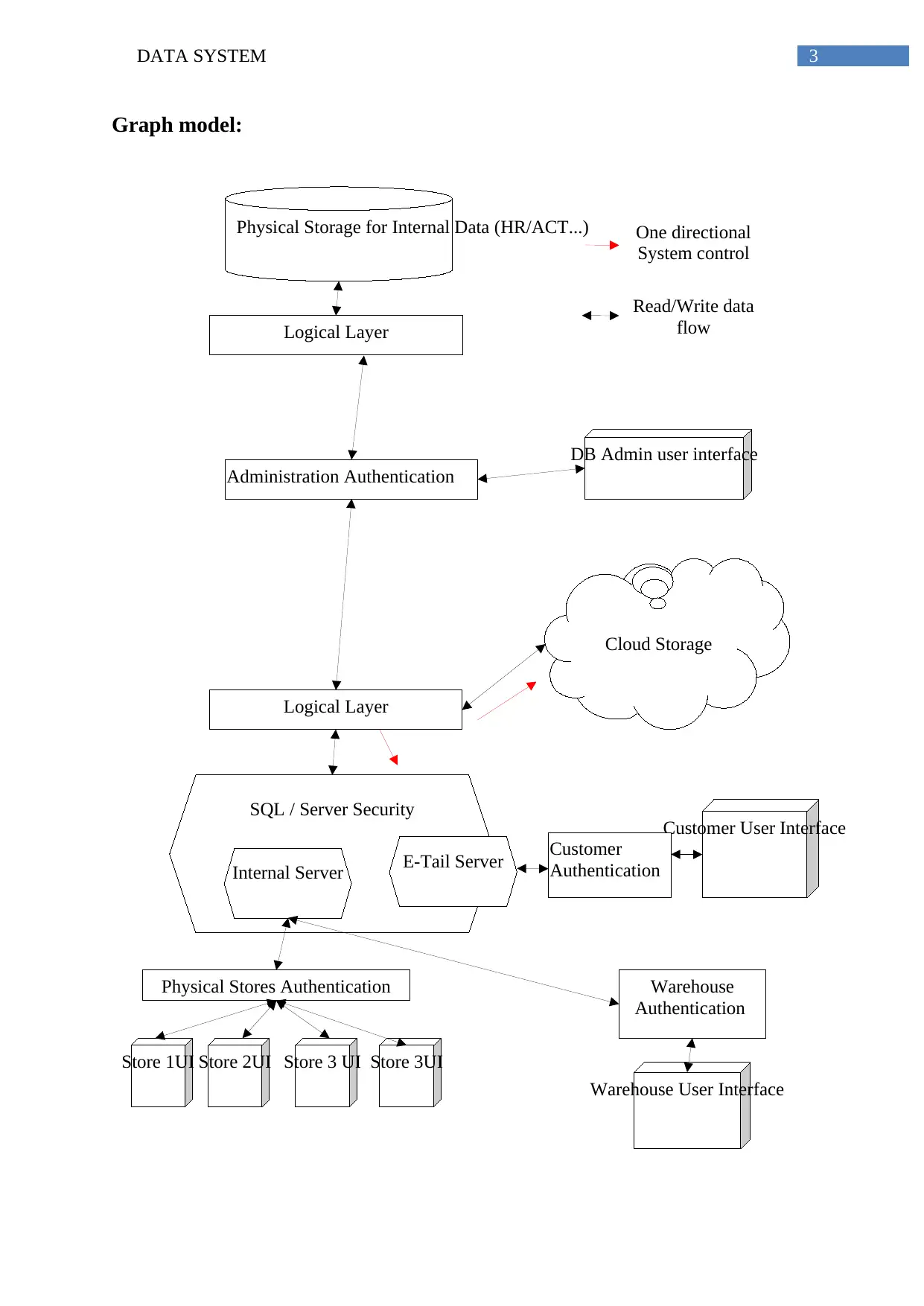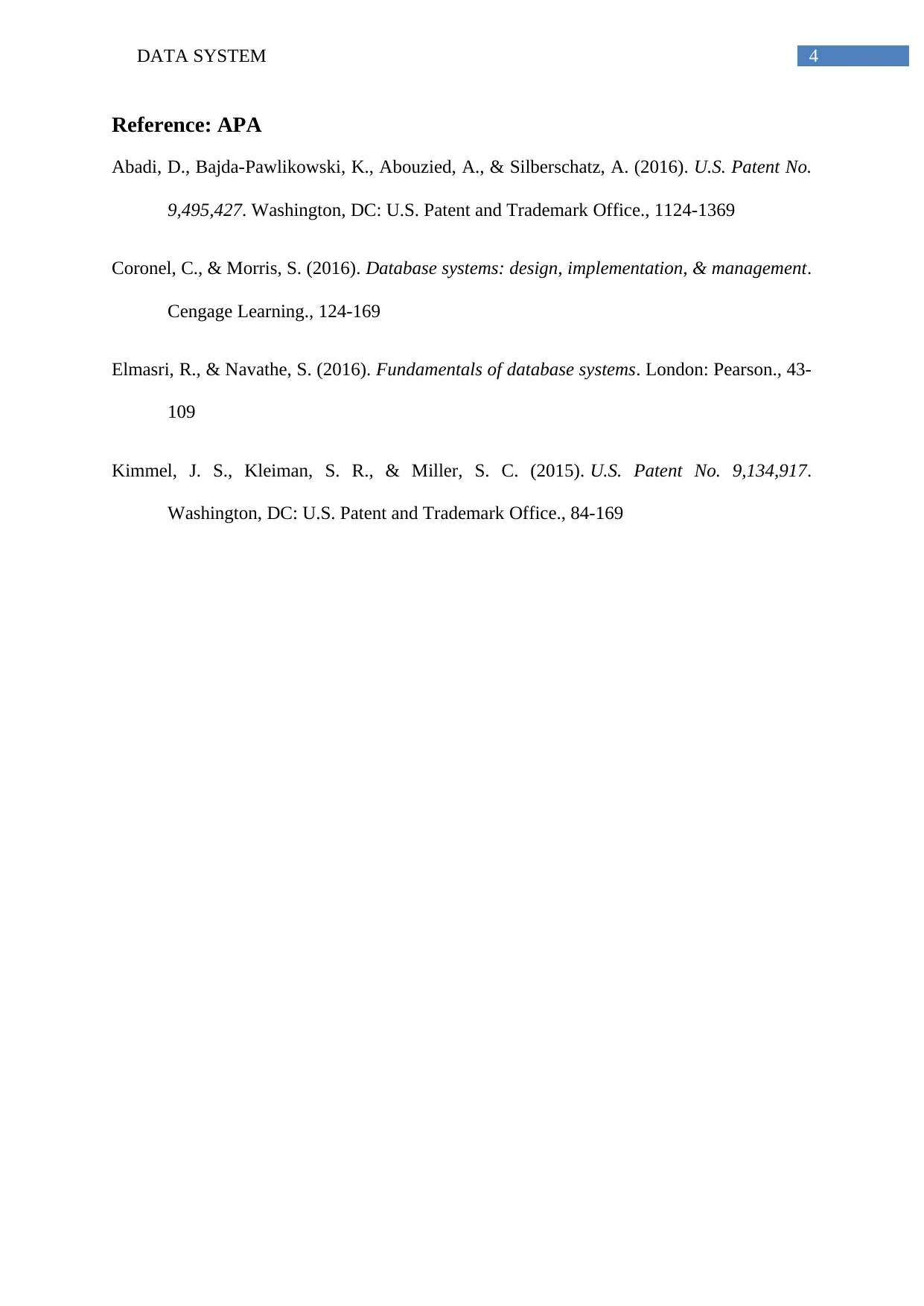Data System Report: Advanced Data Modeling and System Architecture
VerifiedAdded on 2023/05/28
|4
|540
|350
Report
AI Summary
This report provides a comprehensive analysis of a data system, focusing on data modeling and system architecture. It details the requirements for user interfaces, including those for database administration, individual stores, and the warehouse. The report outlines the need for various authentication systems to secure different access points, such as physical stores, administrators, and customers. Furthermore, it describes the logical operations, including SQL queries and database processing, emphasizing the role of cloud storage and SQL servers. The report also discusses data integrity and server configurations, highlighting the use of internal and E-Tail servers with SQL Server security. It then covers the storage system, differentiating between physical storage for internal data and cloud storage for real-time data and customer-related data. The report also includes a graph model to visualize the data flow and system components, and references relevant academic sources.
1 out of 4










![[object Object]](/_next/static/media/star-bottom.7253800d.svg)